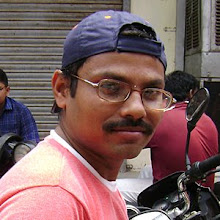This is much more than the national average of 8.49%, making it the second fastest-growing state in the country. It has, of course, benefited from a low base effect since the state has long been a growth laggard, but governments before Mr Kumar had been unable to accelerate economic growth.
The output growth is a consequence of the restoration of normalcy. Kidnappings for ransom are no longer creating headlines, teachers have returned to schools and colleges, and doctors and nurses to primary health centres.
Villages and towns are being connected by a vast network of roads. Institutions are seeing a revival. Among Mr Kumar’s biggest achievements is the move to empower women—an experiment now being replicated in other states. Soon after assuming power, the state government decided to reserve 50% of the seats in panchayats and urban local bodies for women. The decision was hailed as a “revolutionary” step aimed at involving women in the decision-making process and giving them a voice in the political system.
The affable, soft-spoken chief minister has also made concerted efforts to improve education, health and infrastructure. In educational, the emphasis has been on persuading children to go to school. He kicked off two ambitious projects—Mukhyamantri Poshak Yojana and Mukhyamantri Cycle Yojana—to convince parents to send their daughters to school. All girl students above Class VIII were given free uniforms and a bicycle each. “The result has been remarkable. The drop-out rate among high school girl students has come down dramatically from 25 lakh to 10 lakh. So successful has the programme been that it’s now being extended to boys,” the Bihar CM pointed out.
The government simultaneously recruited 1 lakh teachers to attain a teacher-student ratio of 1:40, or one teacher for every 40 students. Schools in villages , which had become dilapidated because of the years of neglect, have been re-built and renovated.
In a state where poverty levels are still high, the health sector had taken a severe knock in the past few decades. Primary health centres (PHC) had been rendered non-functional , and doctors had stopped visiting them. The government has now appointed 25,000 doctors on contract, and a scheme has been launched to provide 102 free medicines to patients. The sector has, because of these measures, seen an impressive revival. Studies conducted in the state have shown that while, previously, only 39 patients visited a PHC every month on an average, the figure has shot up to 4,500 every month. Again, because of a series of incentives offered by the state administration, institutional deliveries, which were only 45,000 in 2005-06 , had gone up to 3.12 lakh by July this year.
Aware that no meaningful development can take place if the infrastructure is below par, the state government embarked on an ambitious mission to improve it. Thus, while just 318 km of roads were built in 2004-05 , 2,418 km of roads were constructed in 2008-09 . And while only 316 bridges could be constructed between 1975 and 2005, some 400 bridges have been built since this government came to power.link
Showing posts with label empower women. Show all posts
Showing posts with label empower women. Show all posts
Monday, 4 January 2010
Subscribe to:
Comments (Atom)
